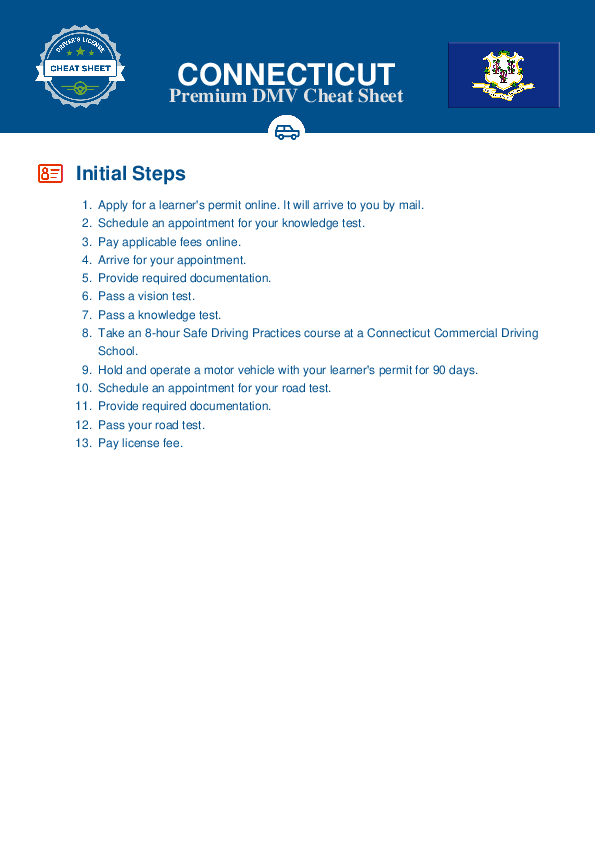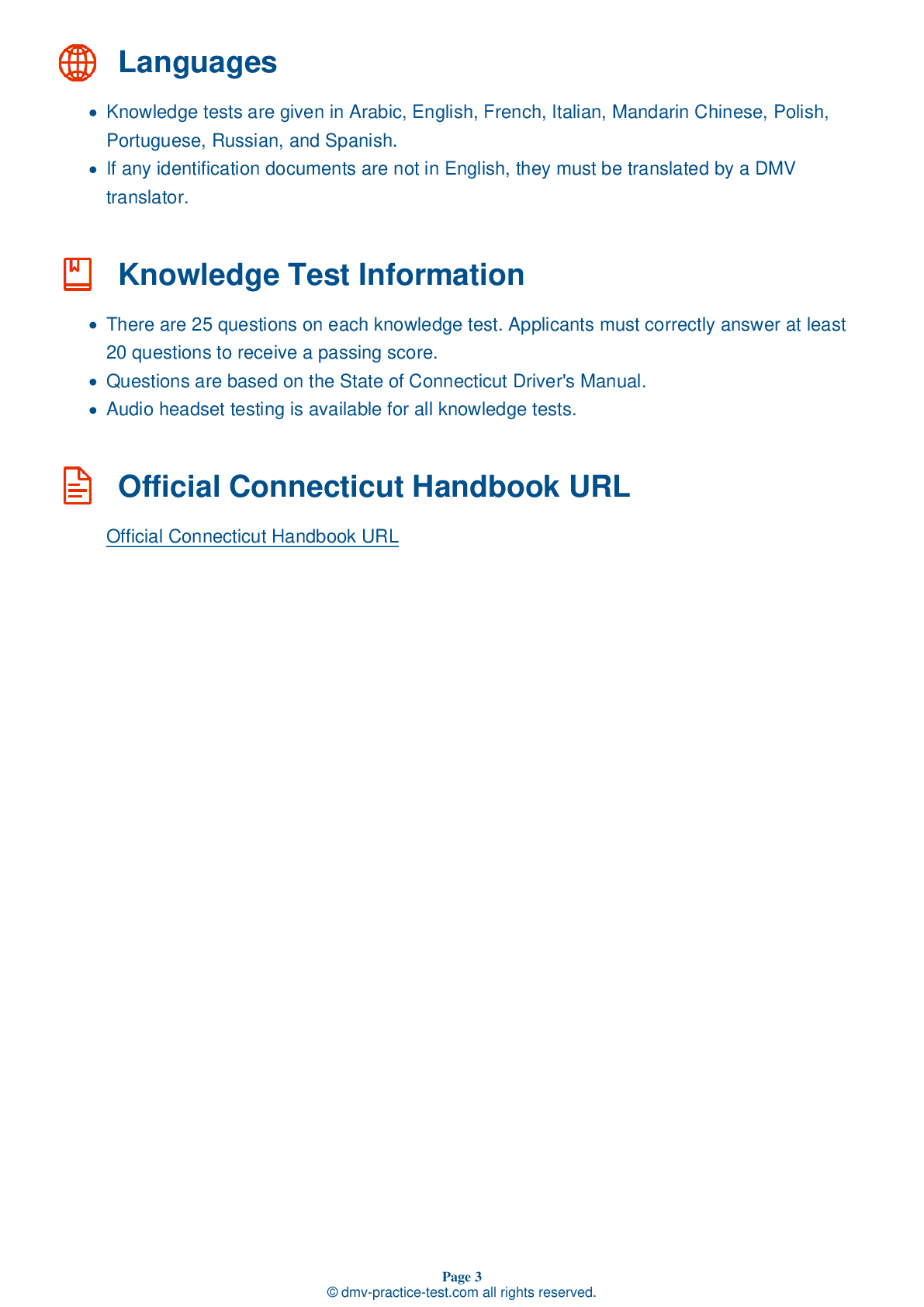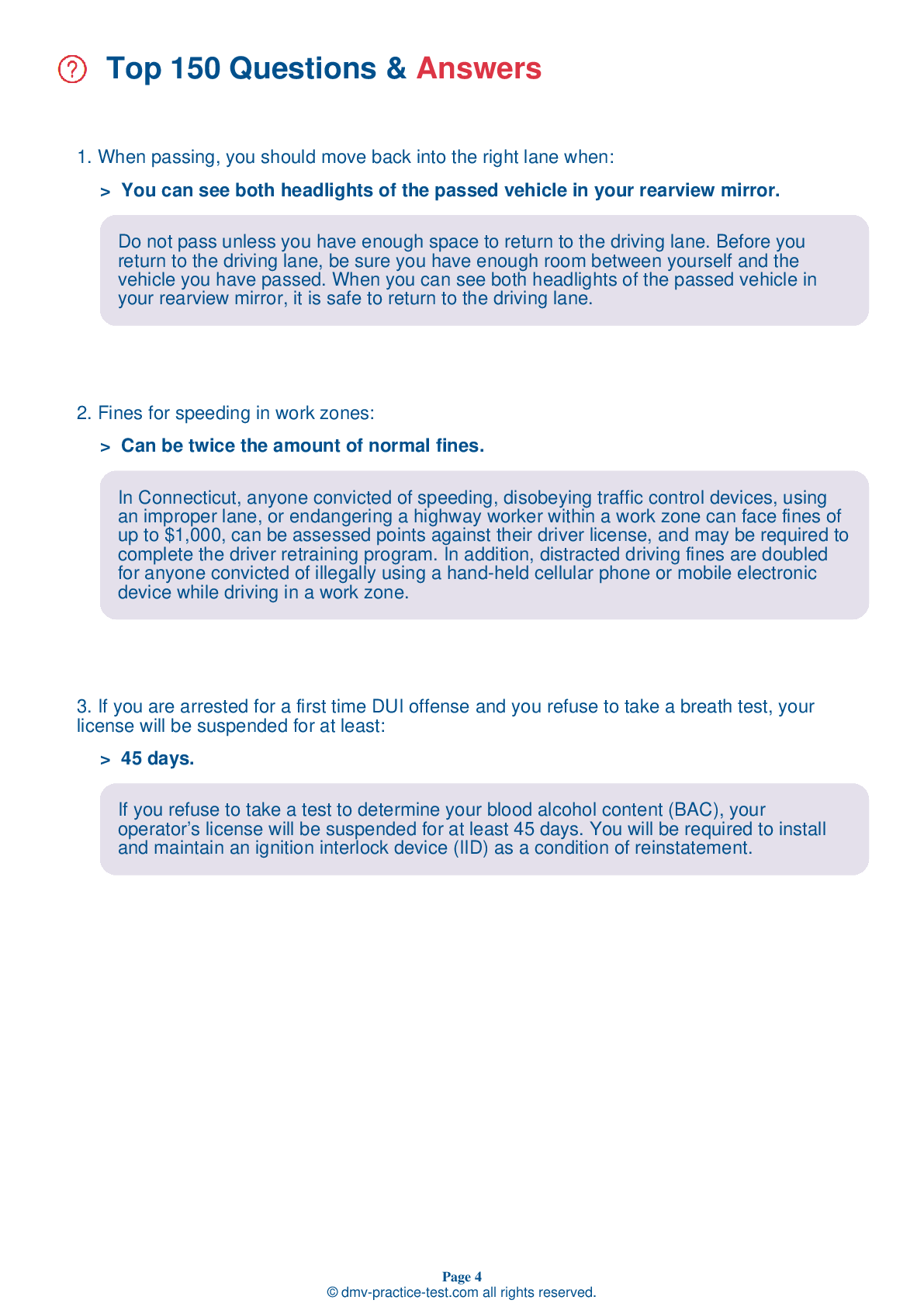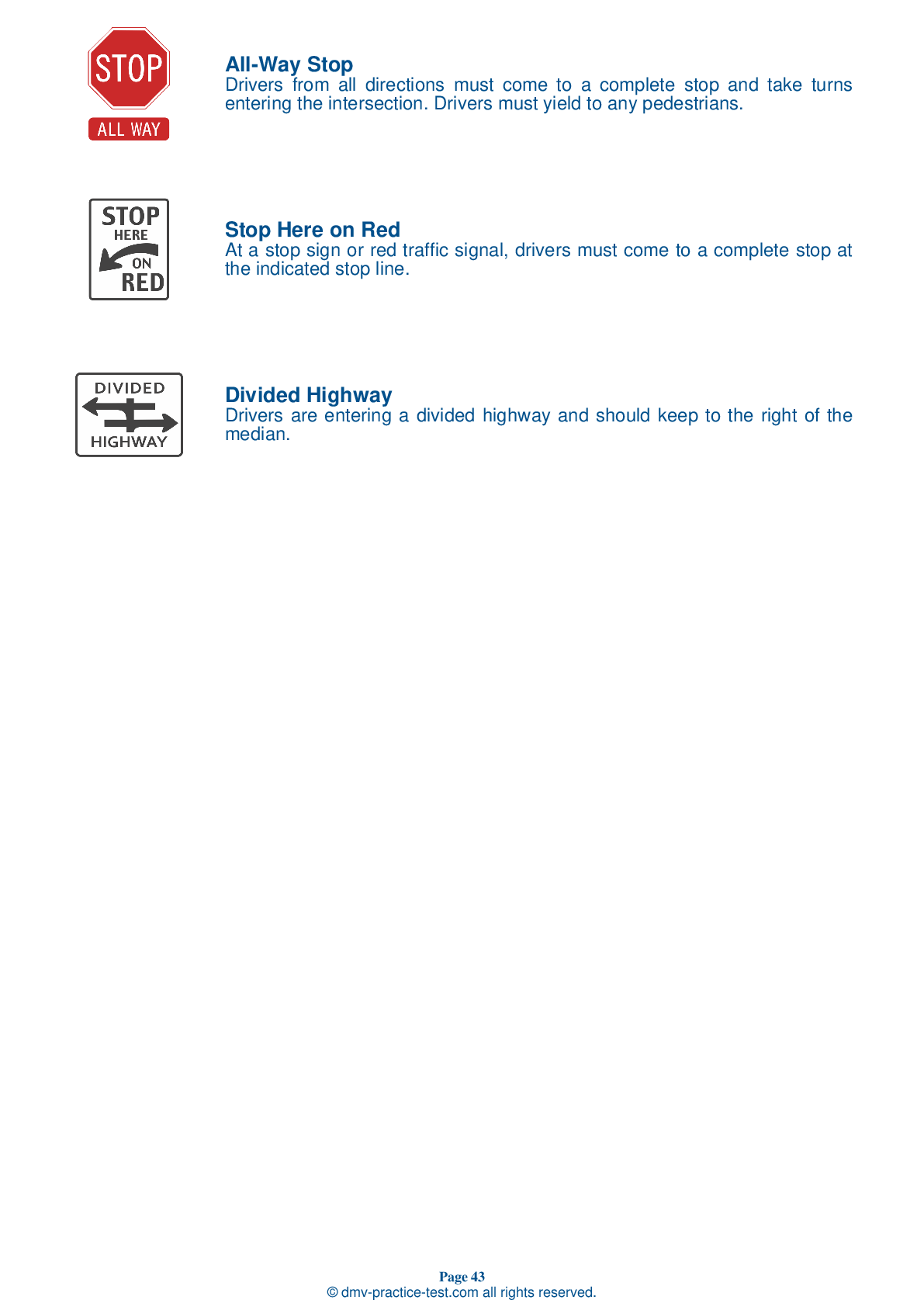FREE Connecticut DMV Practice Test #15 Page 3 of 3
This set of Connecticut DMV practise tests was just updated for January 2025. It includes questions based on the Connecticut Driver Handbook's most essential traffic signs and regulations for 2025. Use actual questions that are very similar (often identical!) to the DMV driving permit test and driver's licence exam to study for the DMV driving permit test and driver's licence exam.
Each practise test question has a hint and explanation to assist you in remembering the concepts. The written component of the official DMV test will include questions about road rules, traffic signs, and driving statutes, as well as information from the Driver Handbook.
To achieve the required passing grade, you must correctly answer 20 of the 25 questions. Take our DMV practise exam to help you prepare for your Connecticut instruction permit or driver's licence.
The DMV exam is available in several languages.
Using any form of testing help will result in an automatic fail, and the DMV may take further action against your driver's licence, so avoid it.
17 . When driving in fog, you should:
Drivers should use low beam headlights when driving in fog. High beams will reflect back at the driver, making it difficult to see.
18 . Drivers turning left must yield to:
Drivers making a left turn must yield to all vehicles approaching from the opposite direction. This includes bicycles and motorcycles.
19 . You may not park within how many feet of a stop sign?
There are many areas where you cannot park. Do not park within 25 feet of a stop sign at any time.
20 . It is dangerous to follow a motorcycle too closely because:
Motorcycles can stop quickly and following them too closely endangers your life and that of the motorcyclist. If the motorcyclist makes a mistake, you need to have enough time and space to avoid a crash.
21 . What does this road sign mean?

An octagonal sign always means stop. When approaching a stop sign, you must come to a complete stop at the marked stop line and proceed only when it is safe to do so. If there is no stop line, stop before the crosswalk. If there is no crosswalk, stop before the intersection at a point from which you can see any oncoming traffic.
22 . If the rear of your vehicle is skidding to the left, you should:
If you begin to skid on a wet or icy road, take your foot off the accelerator, stay off the brakes, and turn your steering wheel in the direction of the skid. However, if you have anti-lock brakes, you should apply your brakes firmly and steer straight ahead.
23 . If you park facing uphill where there is no curb, set the parking brake and:
When parking uphill on a road that does not have a curb, your front wheels should be turned to the right (toward the edge of the road). This will ensure that the vehicle will roll off of the road if the brakes fail.
24 . Regulatory signs are:
Regulatory signs inform drivers of specific laws that must be obeyed. Displayed laws may be about traffic direction, lane use, turning, speed, parking, or special situations. Regulatory signs are commonly white squares or rectangles with black, red, or green letters or symbols.
25 . The following statements regarding the use of seat belts are true, except:
State law requires that safety belts are worn even if a vehicle is equipped with airbags. While airbags are good protection against hitting the steering wheel, dashboard, and windshield, they do not protect you if your vehicle is hit from the side or rear or if the vehicle rolls over. An airbag will not keep you behind the wheel in these situations.
Need Car Insurance? No problem!
Compare the best rates in Connecticut and find a personalized policy that meets your needs.
1. Are You Currently insured ?
2. Married ?
3. Do you own your Home?
4. Do you have more than 1 car ?
5. Have you or a Family Member Honorably Served in U.S. Military ?
6. Your Name
7. Age
8. Zip code
IMPORTANT REMINDER:Auto Insurance is Mandatory to drive in Connecticut. Get covered before you hit the road to avoid any fines.
Ranked by best match



